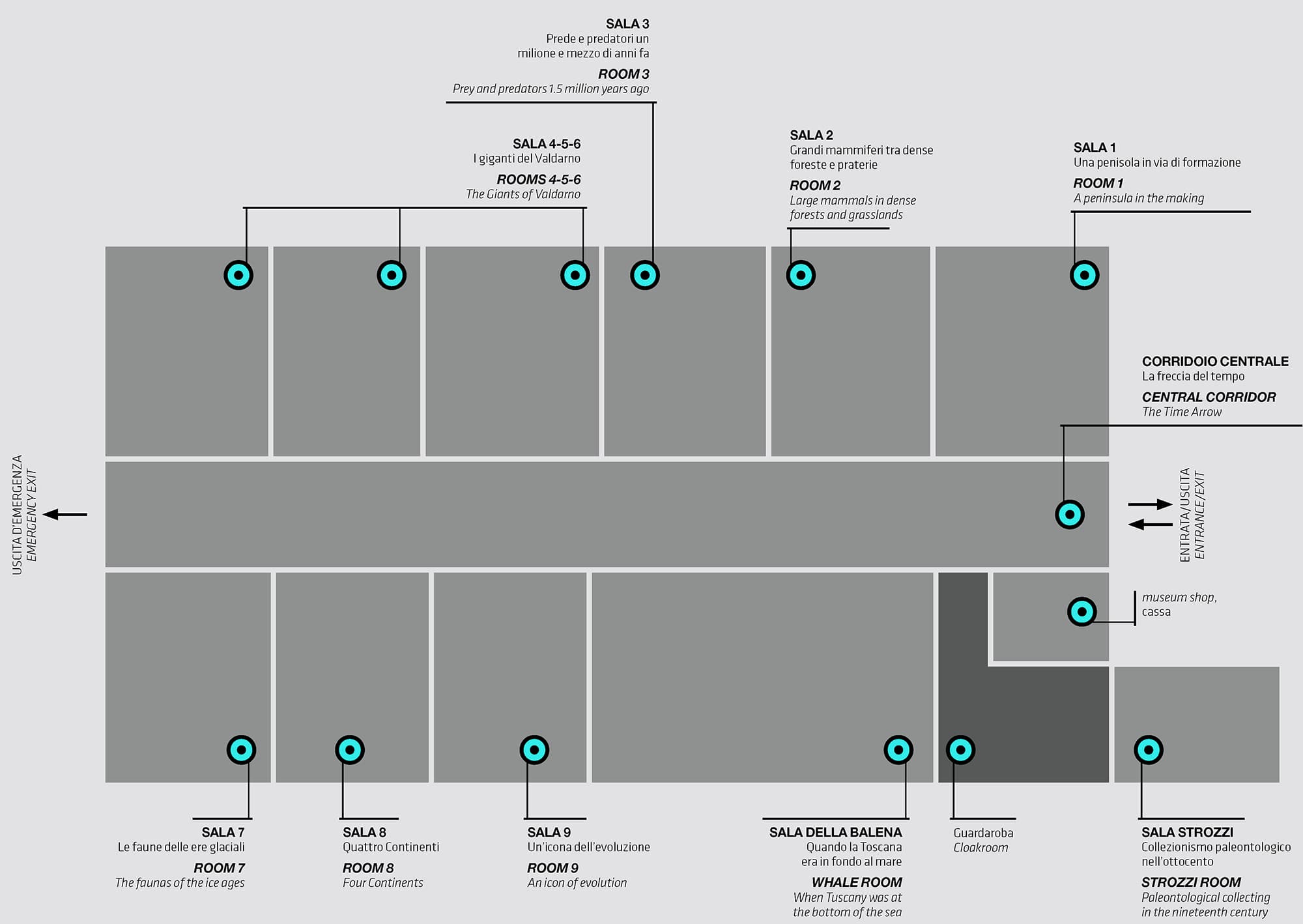Museum of
Geology and Paleontology
The Visit Itinerary
The exhibition is dedicated to the fossils of large mammals, molluscs, and plants that illustrate the history of paleontology and are precious witnesses of the Earth's past.
Of great impact are the skeletons of large proboscidians, including a long-tusked and stocky-bodied mastodon, and a large, four-metre-tall adult elephant. There are also skeletons of a cavern lion, a leopard, a saber-toothed tiger who lived millions of years ago in Tuscany when the area was a savannah.
Visitors can also admire skeletons of sirenians, large ancient herbivorous aquatic mammals, distant relatives of the elephants, and progenitors of the Dugongidae and the Lamantines still present in the Atlantic and the Indian Ocean.
An entire room is dedicated to the horse that originally (55 million years ago) was the size of a dog of medium height. The exhibition allows visitors to see and understand the evolution that occurred for this beautiful animal.
Oreopithecus bambolii is a find of extraordinary value for the study of evolution and unique in the world. This is the skeleton, found in the Tuscan Maremma, of an anthropomorphic monkey that lived 9 million years ago that has many similarities with hominids. In the section part dedicated to fossils of non-European continents, there are the skeletons of large non-flying birds (Moa). On display are also specimens of ammonites and other fossil invertebrates of the various geological eras: from Mauritanian stromatolites, fossil formations with curious shapes that represent the first evidence of life of the Earth (700 million years) up to the Pliocene molluscs (5-1.8 millions of years ago).
The evolution of the plant world is also documented by our remarkable paleobotanical collection.
The exhibition wraps up with the modern Sala della balena (the Whale Room), an immersive space in which the visitor can walk "on the bottom of the sea", next to the 10-metre long skeleton of a Balenopteridae lived three million years ago and today exhibited with the remains of the animals that have fed on the carcass, from the great sharks to the very small bone-eater worms.

